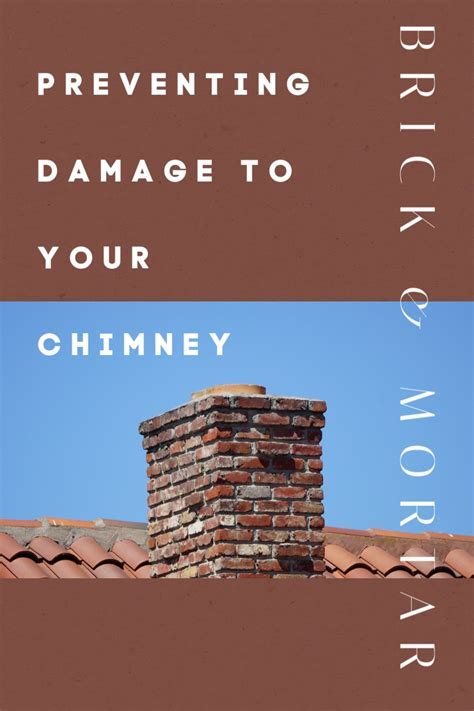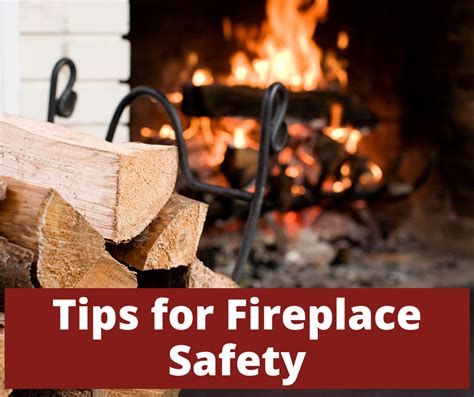Picture a scene where vivid flickering lights dance gracefully above your rooftop, creating a captivating spectacle that evokes a sense of warmth and comfort. As the orange, glowing flames gracefully ascend, they mysteriously emanate from the highest point of your chimney, providing a mesmerizing display for onlookers. This occurrence, though captivating, necessitates a deeper understanding of its causes, as well as the implementation of essential safety measures.
When witnessing such an extraordinary display, one must delve into the origins of this phenomenon to comprehend its intricacies. Undoubtedly, the emergence of flames from the apex of the chimney raises questions and curiosity. How are these flames ignited, and what factors contribute to their sustained presence? Understanding the underlying causes of this phenomenon will offer insights into potential dangers that lurk within.
As we seek to ensure the safety and security of our homes, it becomes imperative to address the potential hazards linked to flames emanating from chimneys. By acknowledging and understanding the causes, we can take proactive measures to mitigate risks and safeguard our living spaces. It is imperative to remember that the beauty of the fire dancing atop our chimneys can quickly transform into a hazard that poses a threat to both our property and the well-being of our loved ones. Hence, comprehensive knowledge regarding the potential causes and effective solutions is crucial to protect ourselves from any potential harm.
Common Hazards in Chimneys: Causes and Essential Safety Measures

When using a chimney, it is crucial to be aware of the potential hazards that can arise. By understanding the various causes behind these dangers and implementing appropriate safety measures, you can help ensure a safer environment for yourself and your home.
1. Creosote Buildup: The accumulation of creosote, a black, sticky substance, is one of the primary causes of chimney fires. This byproduct of burning wood can ignite easily and lead to dangerous situations. Regular chimney inspections and cleanings by professionals are necessary to remove this buildup and prevent fire hazards.
2. Blockages and Obstructions: Debris such as animal nests, leaves, or even fallen bricks can obstruct proper airflow in chimneys, leading to inadequate ventilation and potential fire. Installing a chimney cap or spark arrestor can help prevent blockages, allowing smoke and gases to escape safely.
3. Damaged Chimney Liner: A deteriorated or damaged chimney liner poses a significant risk. These protective layers can become cracked or corroded over time, allowing heat and sparks to reach combustible materials in the surrounding structure. Regular inspections can identify any liner issues and prompt necessary repairs or replacements.
4. Improperly Installed or Maintained Chimneys: Poor installation or improper maintenance practices can result in fire hazards. It is essential to have a professional chimney sweep and inspect the chimney regularly, especially if you have recently moved to a new home or suspect any issues with the chimney's construction or maintenance.
5. Lack of Chimney Cleaning: Neglecting to clean your chimney regularly can lead to the accumulation of debris and creosote, increasing the risk of chimney fires. Following a recommended chimney cleaning schedule will help remove potential fire hazards and ensure your chimney functions properly.
6. Insufficient Ventilation: A poorly ventilated chimney can trap smoke and gases inside the home, endangering the health and safety of occupants. Adequate ventilation is crucial to allow the smooth flow of smoke and toxic fumes out of the chimney and prevent the risk of carbon monoxide poisoning.
Remember, prevention is the key to chimney fire safety. By understanding the potential hazards and taking proactive measures such as regular inspections, maintenance, and cleaning, you can significantly reduce the risk of fire and keep your chimney operating safely.
Understanding the Origins of Chimney Fires
Expanding our knowledge regarding the origins of chimney fires is essential in fortifying our understanding of the potential dangers and risks associated with them.
By delving into the causes that contribute to chimney fires, we can better grasp the underlying factors that lead to these hazardous incidents. Awareness of these causes allows us to undertake preventative measures and reduce the likelihood of such fires.
1. Ignition Sources: Identifying the various ignition sources that can lead to chimney fires is crucial in comprehending their origin. It is paramount to recognize that these fires can be sparked by substances such as creosote buildup, sparks from burning embers, or even external sources like lightning strikes.
2. Creosote Accumulation: A significant aspect to consider while exploring the origins of chimney fires is the accumulation of creosote within the chimney lining. This highly flammable substance forms as a result of incomplete combustion and sticks to the interior walls of the chimney. Over time, the build-up of creosote becomes a potential fuel source for fires.
3. Structural and Ventilation Issues: Another crucial factor to comprehend in understanding chimney fires is the impact of structural or ventilation deficiencies. Damage caused by a deteriorating chimney or compromised airflow can create an environment more susceptible to fires.
To effectively protect ourselves and our homes from the perils of chimney fires, it is essential to have a comprehensive understanding of their causes. By recognizing potential ignition sources, monitoring and reducing creosote buildup, as well as addressing any structural or ventilation issues, we can ensure the safety and well-being of our homes.
Important Tips to Ensure Fireplace Safety

Fireplaces can provide warmth and create a cozy atmosphere in your home. However, it is crucial to prioritize safety when owning a fireplace. To guarantee the security of your property and loved ones, it is essential to follow a few important guidelines.
- Regular Maintenance: Make sure to schedule regular inspections and maintenance for your fireplace to prevent potential hazards. This will help identify any issues, such as creosote buildup or cracks in the chimney, and address them promptly.
- Safe Fuel Usage: When choosing fuel for your fireplace, opt for seasoned wood or manufactured logs. Avoid using wet or unseasoned wood, as it can lead to excessive smoke and increased fire risks.
- Proper Ventilation: Ensure that your fireplace is properly ventilated to allow for the efficient flow of smoke and gases out of your home. Proper ventilation also helps prevent the accumulation of harmful substances indoors.
- Use a Fireplace Screen: A sturdy fireplace screen acts as a barrier between the fire and your living space. It helps prevent sparks and embers from escaping, reducing the risk of accidental fires.
- Keep Flammable Objects Away: Avoid placing flammable materials, such as curtains, rugs, or decorations, near the fireplace. Maintaining a safe distance between these objects and the flames minimizes the chances of ignition.
- Supervise the Fire: Never leave a fire unattended. Always ensure that someone is present when the fireplace is in use. This ensures immediate response in case of any emergencies.
- Install Smoke Detectors: Install smoke detectors near the fireplace area and regularly test them to ensure they are functioning correctly. Smoke detectors provide early warning signs in case of a fire outbreak.
- Have a Fire Extinguisher: Keep a fire extinguisher within reach of the fireplace. Familiarize yourself with its operation and make sure it is in proper working condition.
- Educate Family Members: Teach everyone in your household about fireplace safety rules and ensure they understand the potential dangers. This helps promote a responsible and cautious approach to fireplace usage.
By following these essential safety tips, you can enjoy the warmth and comfort of your fireplace while maintaining a secure environment for your home and family.
Preventing Chimney Fires: Effective Solutions and Maintenance
Avoiding fire hazards in your chimney requires a proactive approach and regular upkeep. By implementing effective measures and conducting routine maintenance, you can significantly reduce the risk of a chimney fire.
One key solution is to ensure proper ventilation in your chimney. Adequate air circulation helps prevent the buildup of flammable substances, such as creosote, which can lead to chimney fires. Regularly inspecting and clearing any blockages or obstructions from your chimney ensures steady airflow and minimizes the chances of ignition.
Another crucial aspect of preventing chimney fires is conducting regular cleaning and inspections. Scheduling professional chimney cleanings helps remove accumulated debris, including soot, bird nests, and other potential fuel sources. Additionally, inspections allow for the identification of any structural issues or signs of damage that may increase the risk of a fire.
Utilizing appropriate chimney accessories also contributes to fire prevention. Installing a chimney cap or spark arrestor helps prevent embers or sparks from escaping the chimney and igniting nearby flammable materials. Similarly, using a chimney damper enables you to control the airflow and minimize the buildup of combustible substances.
Properly maintaining your fireplace and ensuring its components are in good working condition plays a vital role in fire prevention. Regularly cleaning and inspecting the fireplace, including the hearth, firebox, and flue, helps eliminate potential fire risks. Additionally, promptly repairing or replacing any damaged or malfunctioning parts of your fireplace contributes to a safer environment.
Lastly, keeping a close eye on the temperature and smoke behavior during fireplace usage aids in fire prevention. Unusual temperatures or excessive smoke production could be indications of a buildup or blockage in the chimney. Recognizing these signs and addressing them promptly can help prevent the occurrence of a chimney fire.
In conclusion, taking preventive measures, conducting routine maintenance, and being vigilant during fireplace usage are effective solutions for preventing chimney fires. By implementing these practices, you can ensure the safety of your home and loved ones while enjoying the warmth and comfort of your fireplace.
FAQ
Why is fire emanating from the chimney?
There are several possible causes for fire emanating from the chimney. It could be due to a buildup of creosote, which is a highly flammable substance that can accumulate over time. Another possibility is the presence of a blockage in the chimney, such as a birds nest or debris, which can cause the heat and flames to escape through cracks and gaps. Faulty installation or maintenance issues, such as a damaged liner or improper sealing, can also contribute to fire emanating from the chimney.
How can I prevent fire from emanating from my chimney?
To prevent fire from emanating from your chimney, it is important to have regular chimney inspections and cleanings. This will help remove any creosote buildup and identify any blockages or maintenance issues. Additionally, using dry, well-seasoned wood and properly managing your fire can help minimize the creation of creosote. Installing a chimney cap can also prevent birds and debris from entering the chimney and causing blockages. Following these safety measures can significantly reduce the risk of fire emanating from your chimney.
What should I do if I notice fire coming out of my chimney?
If you notice fire coming out of your chimney, the first thing you should do is ensure your safety and the safety of others in your home. Immediately evacuate the premises and call the fire department. Never attempt to extinguish the fire yourself, as it can be dangerous and you may not have the necessary equipment or knowledge to do so safely. It is best to leave it to the professionals to handle the situation and minimize the risk of further damage or injury.
Are there any solutions to prevent fire emanating from the chimney?
Yes, there are several solutions to prevent fire emanating from the chimney. Regular chimney inspections and cleanings can help identify and address any maintenance issues or blockages. Installing a chimney cap can prevent birds and debris from entering the chimney, reducing the risk of blockages. Using dry, well-seasoned wood and properly managing your fire can also minimize the creation of creosote. Additionally, ensuring proper installation and sealing of the chimney can help prevent fire from escaping through cracks and gaps. By implementing these solutions, you can greatly reduce the likelihood of fire emanating from your chimney.




